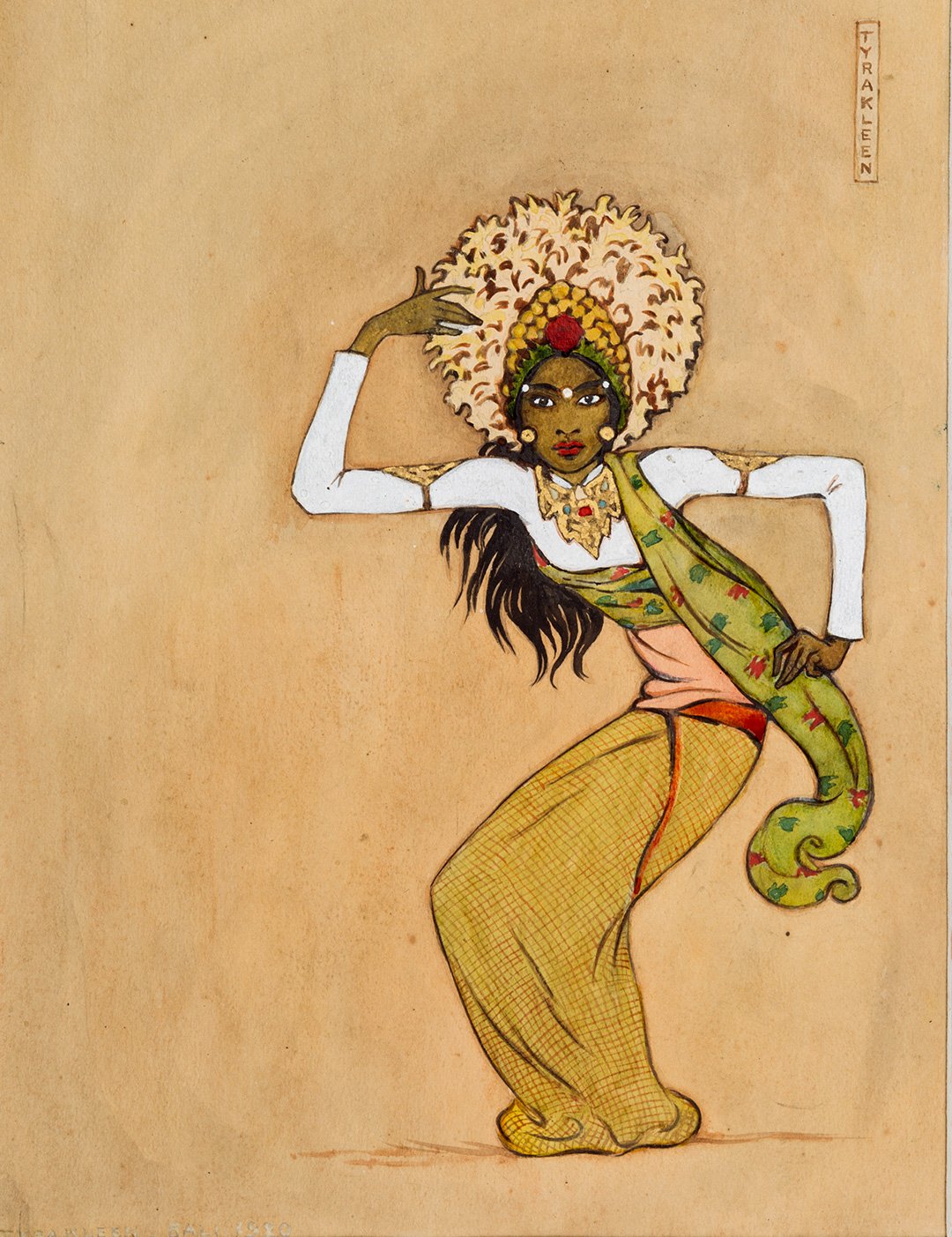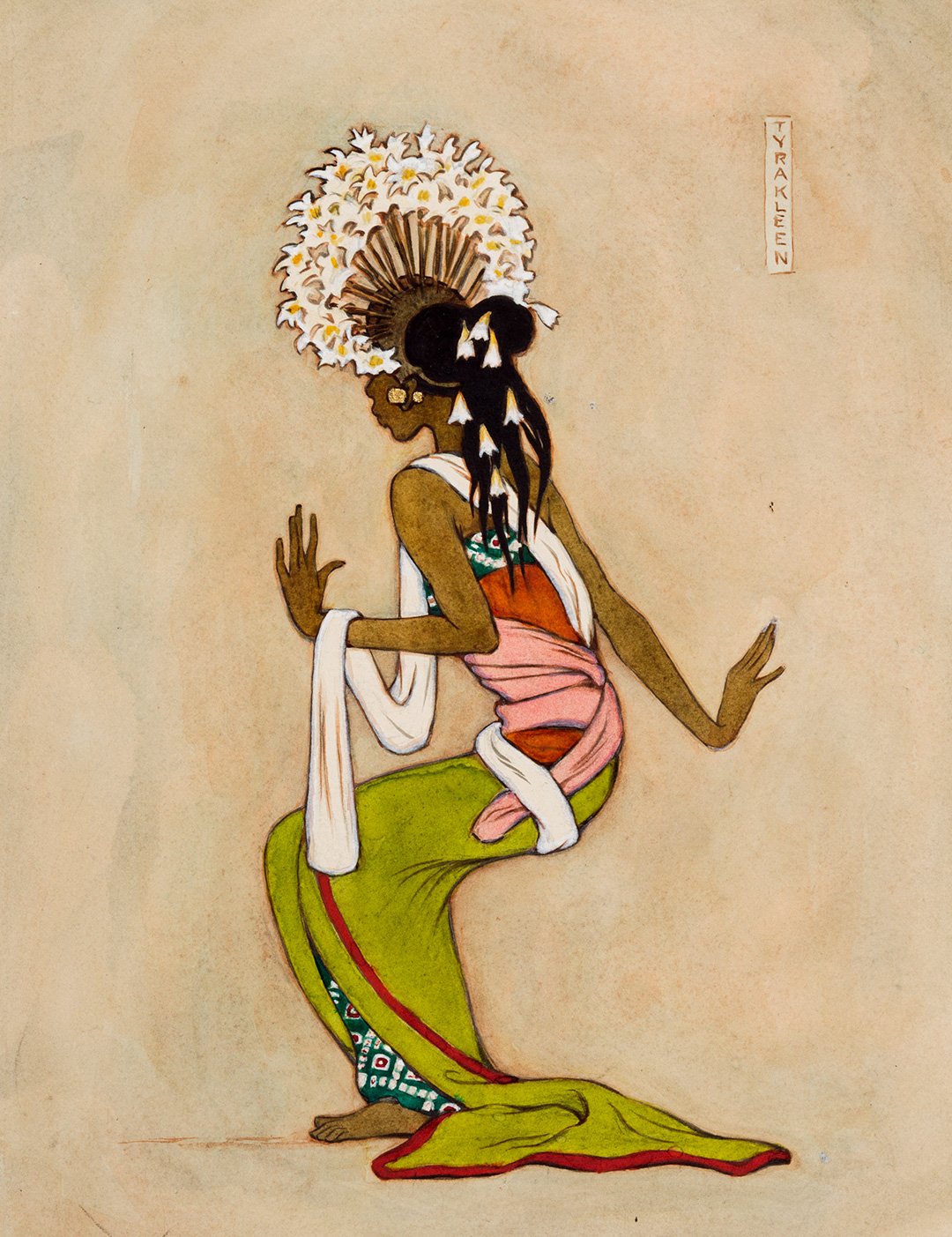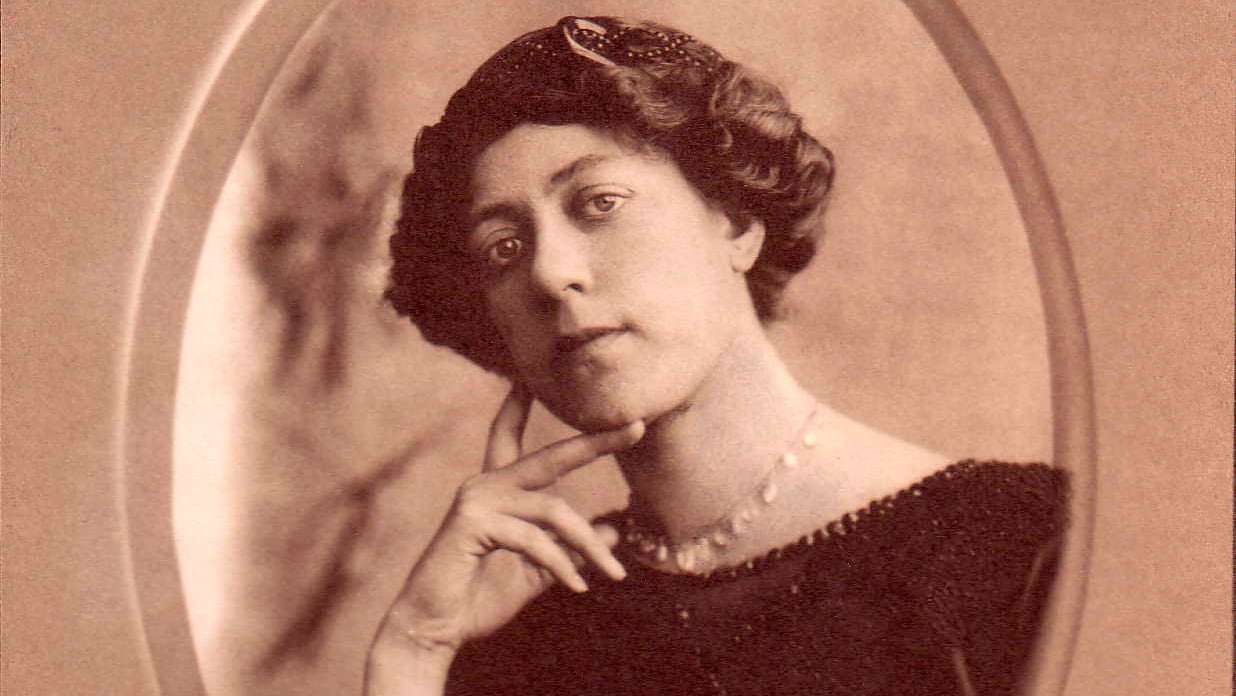
This exhibition shows works from her book Temple Dances in Bali (1936). During her trip to Bali, Kleen photographed dance motifs, nature and buildings. She saw dance as the highest form of art and studied it anthropologically by living in Bali and learning its culture, language and dancing.
Kleen's gouaches mainly depict legong, a non-religious dance performed by both women and men today and classified as an Intangible Cultural Heritage by UNESCO.


Tyra Kleen, gouaches depicting balinesian dancing (1919–1921),
Museum of Ethnography, collection 1972.08.
She bequeathed her art to the Swedish House of Nobility, with the condition that it be published 50 years after her death. Some of her art, collected objects and photographs can be found today at the Museum of Ethnography. A few of the objects from Bali are on view in the gallery The Storage (box Q12). Welcome in!

Portrait of Tyra Kleen, unknown photographer, 1912.
Just over ten years before Tyra Kleen came to Bali, the Dutch had forcibly incorporated the island into their Southeast Asian empire. Dutch troops killed more than a thousand Balinese who resisted the military invasions and dissolved several small kingdoms. The Dutch self-image of an ethical and rational colonial power received international criticism after the brutal invasion of southern Bali. To meet the criticism, the Dutch launched the island as a living museum, where classical culture would be promoted and preserved. Bali was opened to tourism in 1914. Wealthy artists and anthropologists from Europe began traveling to Bali to experience the dream of the sensual Orient, radically different and uninfluenced by the West.
The decoratively exotic dreamscape of Balinese culture as T.K. conveyed in her paintings and texts hide uncomfortable stories. They show neither European control of territory and economy, exploitation of natural resources nor forced labour and trafficking - which were part of life in the colonies during Tyra Kleen's visit.